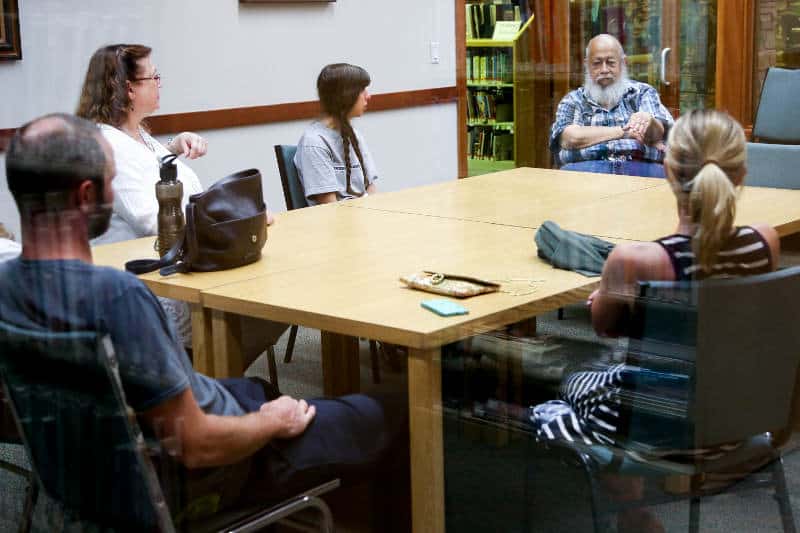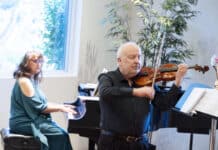
To paraphrase Chuck Palahniuk, there are two rules that come first when viewing a solar eclipse.
Rule No. 1: Don’t stare blindly at a solar eclipse.
Rule No. 2: Do not stare blindly at a solar eclipse.
The natural phenomenon is crossing the United States the morning of Monday, Aug. 21. Though Arizona will not be in the path of totality, it will see between 70 to 75 percent of the sun fall behind the moon as our satellite passes in front of it.
The Sirius Lookers, a local astronomy club, got together on Wednesday, Aug. 16, to discuss proper viewing as well as some other viewing opportunities happening.
The recommendation from the club for eyewear was aluminized mylar glasses. They are created by placing the lenses into a vacuum chamber, where aluminum is also placed with a current running through it. The current is brought up to a level that vaporizes the metal, and when it settles back down, it adheres to the lenses, giving them a layer of protection. Extended viewing of the sun even with the protection is not recommended, though.
No. 14 welder’s masks can also work. Of course, there’s also the five-sided box with a pinhole in it. Lining the pinhole up with the eclipse will show a projection of it on the ground or a sheet of paper.
Much of the club plans on viewing at the Sedona Public Library, though there were some who were heading to a point on the path of totality, which goes roughly from South Carolina to Oregon.
Residents will not see it here, but these coastal states will experience a spring tide, or an exceptionally strong tide, due to the combined pull of the sun and moon.
Another reason to look up recently has been the Perseid meteor shower. The club said though the peak of this event was over the weekend, it may still present some viewing opportunities as summer showers have longer windows of opportunity in general compared to winter and spring showers.
Recalling past showers, a projected amount of 100 sightings per hour was seen as a good spacial deal, but one member said he had been “spoiled” from showers he’d seen that topped 1,000 per hour.
Listening to the club, it became obvious that it wasn’t just the observing that drew them, it was what they looked through.
Telescopes, specifically the glass in them, were of great interest. Size was one big piece of it, as many of the more impressive private specimens club members had looked through had as large as 32-inch diameter glass. In perspective, many first-time telescope buyers have glass measured in millimeters.
But it wasn’t just the glass’ size. It was the meticulous way it took shape. Building your own telescope or helping out with a friend’s is a pastime that can take years to complete.
Nearly everything from heating up the glass around a mold to get the curves right, to getting the last bit of polish can be done in a basement. Computations can be run to find rough areas, which are then sanded away beginning with 80-grit paper.
Of course, the larger the telescope, the heavier the glass, but innovations can help take some of that away. One of the larger pieces discussed was built in three layers: Two matching exterior pieces, as well as interlocking, two millimeter-thin tubes in between. When heated, the tubes expand and form hexagons like a honeycomb. This takes a bit of the burden off the bulky glass.
But it doesn’t all go smoothly. Sometimes things crack, which was recounted as being especially disheartening when the glass is taken into a professional shop and it happens.
Once it’s finished, though, it becomes a point of pride, but not one to be hidden away. The club has on occasion pulled out their big guns for the public to enjoy as well, showing locals a new perspective of the galaxy.
So whether it’s night or day, there’s always a reason to look up.


















